Time for another review. Well, I haven’t retired yet, but I did try! I quit my job towards the end of the year and casually looked for another for about a month. I’m now back working…!!
This year has been mixed from the point of view of asset growth. Sydney real-estate continues for fall, but Super growth has been good. Let’s dive into the details.
Headline Figures
| 2020 Dollars | |||
| 2019 | 2020 | Planned 2020 | |
| Cash | $625,977.39 | $593,536.27 | $273,808.53 |
| Superannuation | $1,222,880.92 | $1,495,141.14 | $646,452.10 |
| Primary Residence | $1,459,079.73 | $1,210,300.00 | $1,124,083.15 |
| Investment Property | $372,933.90 | $320,150.00 | $273,100.00 |
| Total Assets | $3,680,871.95 | $3,619,127.41 | $2,317,445.52 |
| Asset Change | -5.56% | -1.68% | |
| Change from 2019 to 2020 | Change from planned to 2020 | |
| Cash | -5.18% | 116.17% |
| Superannuation | 22.26% | 131.28% |
| Primary Residence | -17.05% | 7.67% |
| Investment Property | -14.15% | 17.23% |
| Total Assets | -1.68% | 56.18% |
Total asset growth has been approximately -1.68% or -$62K. Cash went down due to more Super contributions.
So, another year of negative asset growth (in spite of working!).
The main reason that assets have gone down is the decline in the Sydney housing market. It’s been going down for about 2 years now. My original assumption back in 2015 was that housing growth would be about 2.83% (just above an assumed inflation rate of 2.77%). While we are tracking above this, it’s not by much (7.89% above expected). Real-estate is a long term asset, so I am not very concerned about this (especially as we may never leave the PPOR!). Super showed some strong growth (about 16% excluding contributions) and this partially offset real-estate decline.
Here are some graphs shedding some light on the impact of the housing market. Each bar represents the value at the beginning of the year in the x axis.
The PPOR (as assessed by the bank) showed some strong growth in the years 2016 and 2017, but some strong declines in 2018 and 2019. In fact, the value of the home hasn’t changed since beginning of 2016.
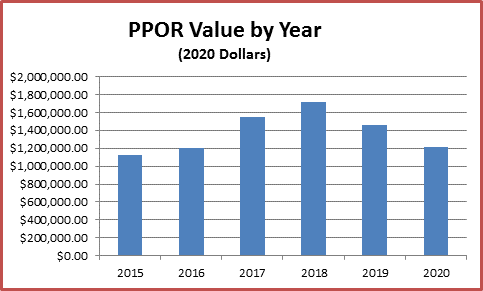
Total assets by year haven’t increased since the beginning of 2018, despite high savings rates.
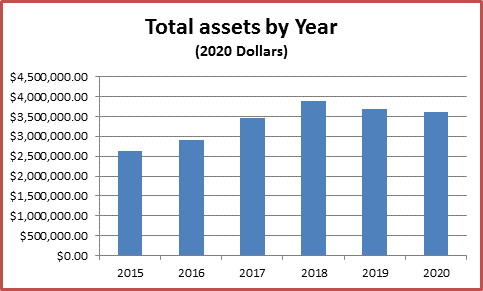
But excluding the PPOR, assets have increased:
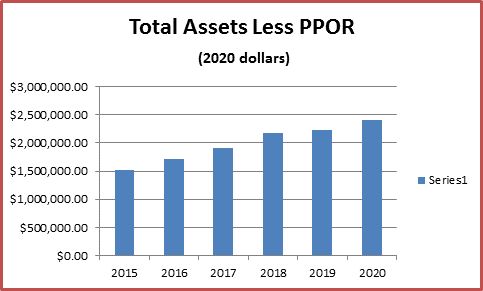
The year 2018 showed weak growth due to Super performing poorly.
Spending and Income in 2019
Spending in 2019 was about $43K, which is quite a reduction on last year and is pretty much as expected.
It’s broken up according to the below:
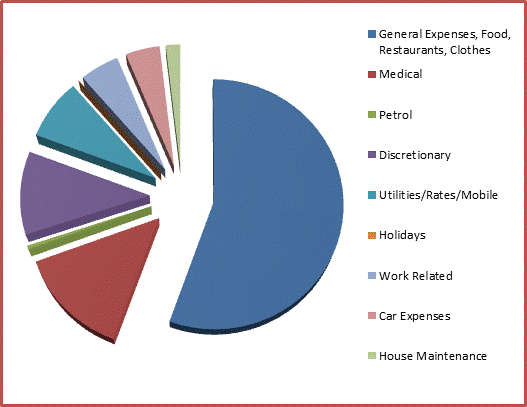
Per month spending is shown below:
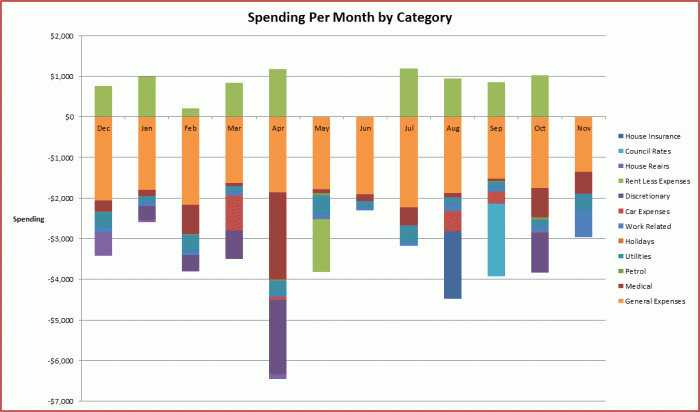
Income in 2019 was about $134K net of tax (slightly less than last year due to gap between jobs).
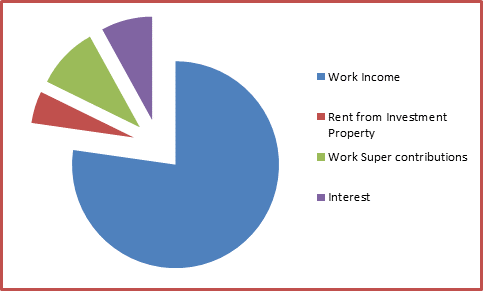
Total savings, including Super contributions, was about $91K, which represents about 65% of income, which is quite good (but not quite as good as living OS when it hit about 81%!).
Updated Spending Patterns
Here is my standard spending pattern which involves a reduction in spending of 2% a year until 75, and then selling the PPOR at this age. Note that I have now inflation-adjusted historical expenses and income (previously this was not done).
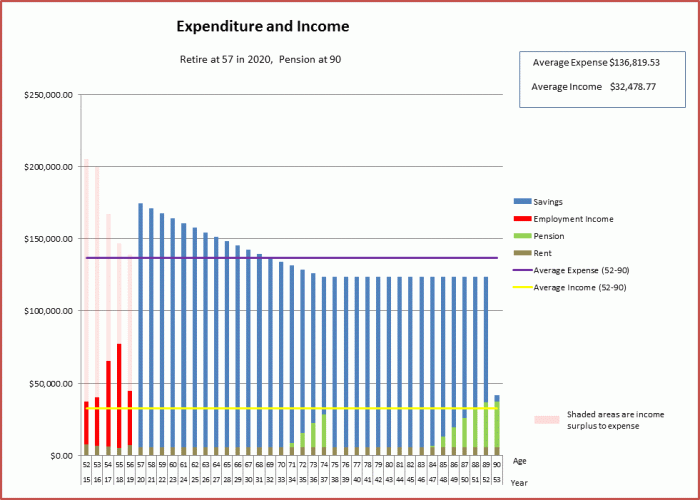
This is quite a bit different than last year. The reason is that the value of the house has fallen quite a bit so there is less to spend after 75. However due to a good savings rate and good growth in Super, average expense, when adjusted for inflation, has gone up 4.85%.
And here is the spend level if we stay in the PPOR:
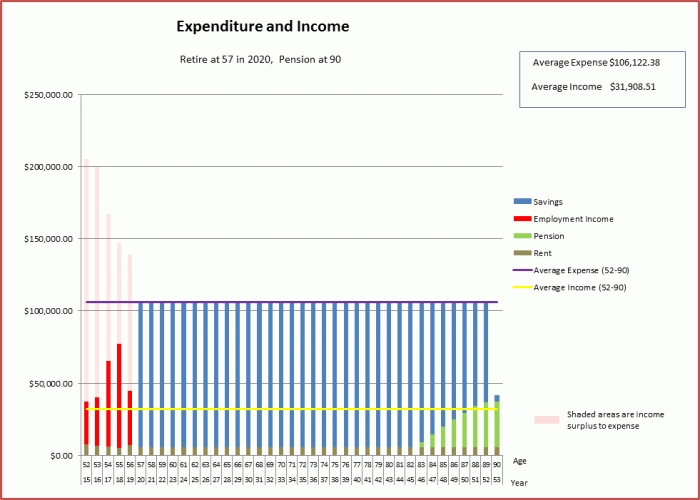
Average planned expense is now around $106.1K, whereas last year it was about $90.7K, a 13.5% increase taking into account inflation, which is quite good. Again, this can be explained by the good super performance, the high rate of saving and the reduction in the time required to be funded (by 1 year!).
Interestingly our projected spend is now at 96% of employment and rental income (the graph above includes super + interest in the historical income).
And here is the planned spending levels assuming we stay in the PPOR compared to the plans back in 2015.

Not too different actually, however in 2015 we planned to sell the PPOR at 64.
And if I didn’t work in 2019…
If I retired at the end of 2018, and didn’t work in 2019, our estimated spend for the period past 2019 would have been $101.2K, which is an increase on the projected $90.7K calculated in the 2018 in review post (or $92.2K in 2020 dollars), or a real increase of about 11.5%. The reason for the increase is the lower than projected spend in 2019 ($42K rather than $90.7K) and the good performance of Super.
Conclusions
Another year and finances are tracking OK. Real-estate has gone down, but Super has gone up. If you read my retirement timing posts, a reasonable conclusion might be that we can expect a crash in the value of super soon. And working an extra year or two might be sensible to build up a buffer…